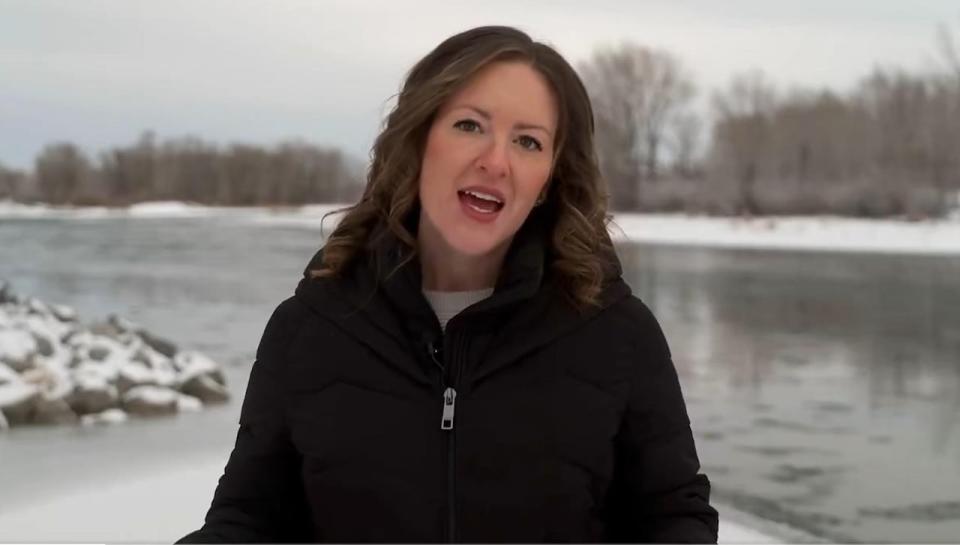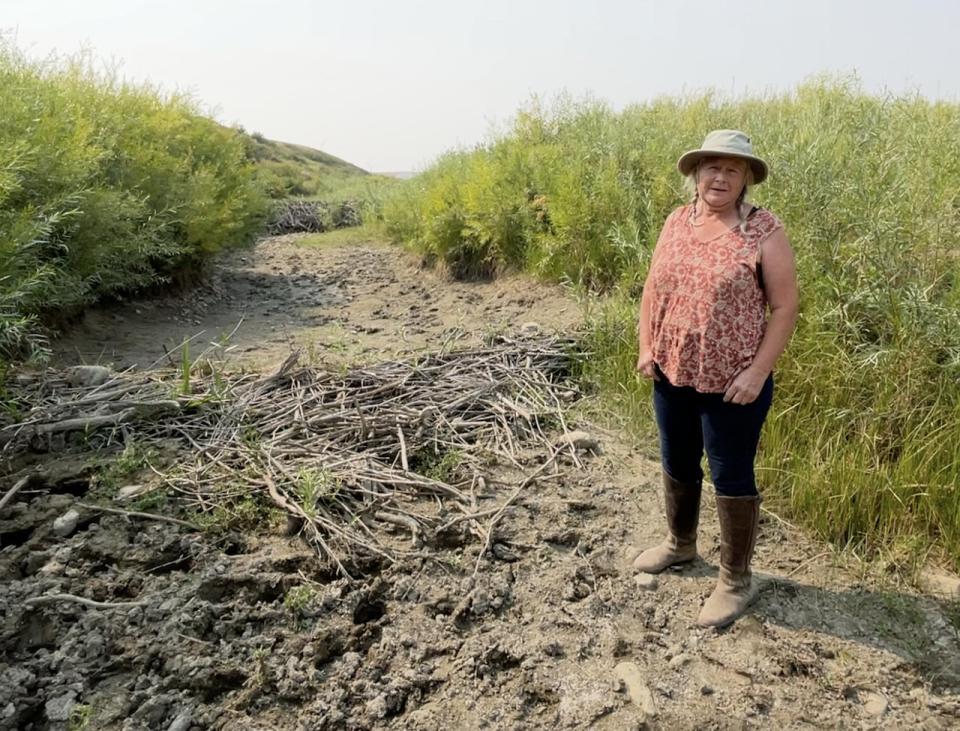'A societal issue': Drought-plagued Alberta braces for even worse conditions

Day after day, the water trucks rolled into the southwest Alberta communities of Cowley, Lundbreck and Beaver Mines. Due to severe drought conditions, that's how residents and businesses got their water supply between last August and late December.
Those communities normally get water piped in from the nearby Oldman Reservoir. But its water levels became so low that the intake pipes were suddenly sucking in prairie air instead — requiring the desperate (and costly) truck solution.
Engineers have figured out a pumping solution to stop the need for daily trucks, but sometimes they still have to haul when the pipes pick up too much silt and sediment from the parched reservoir's bed, says David Cox, reeve of the Municipal District of Pincher Creek.
Water issues have become most of what he talks about — with residents facing sharp usage restrictions, with fellow municipal leaders and farm groups, with provincial officials on a now-regular basis.
"Nobody started talking about this issue until we ran out of water and started hauling it," the reeve tells CBC News. "It's not just our issue. It's a big issue for everybody."
As bad as last year's drought situation was — water trucks to Cowley, feed crunches for cattle farmers, lawn-sprinklering limits in Calgary — many indications show that this year threatens to be even worse in much of Alberta and the rest of western Canada.
Dry January, February, March...
The Alberta government's creeping sense of urgency showed up Wednesday. Environment Minister Rebecca Schulz sent a letter to all 25,000 holders of water licenses in Alberta, launching negotiations to get users to reach water sharing agreements.
A provincial "Drought Command Team" — name carries some gravitas, doesn't it? — will work with major water users in sectors like agriculture and industry to "secure significant and timely reductions," the minister's letter states.
A day earlier, Schulz and other top officials held a telephone town hall with a wide range of Albertans from water commissions, local councils, oil companies and the golf course association.
Stacey Smythe, an assistant deputy minister with Alberta Environment, put forth many grim stats.
The Oldman Reservoir west of Fort Macleod is at 28 per cent capacity, compared to a normal range between 62 and 80 per cent around now. St. Mary's Reservoir is at 15 per cent, when it should be between 41 and 70.
Before freeze-up, Willow Creek near Claresholm logged its lowest monthly flow since 2000. And while northern Alberta watersheds mostly aren't as bad, up at the town of Peace River the namesake river has also logged its lowest average flow this century.
Those water bodies mostly get recharged from melting mountain snowpack, and the accumulation in this mild, dry winter is lower than last year's.
"More than agriculture will be impacted if this extreme level of dryness continues," Smythe said. "The situation is going to impact all of Alberta. It is a societal issue — not an environmental issue."

Standing near a low-flowing Bow River, Environment Minister Rebecca Schulz posted a video in January that discussed the provincial government's drought preparedness measures. (X/@rebeccakschulz)
The drought threatens to reach so many parts of society and the economy.
Shortages could force more ranchers to downsize their cattle herds. Some oil and gas companies have begun facing crackdowns on their water use, and more may come as sharing negotiations pick up.
Municipal Affairs Minister Ric McIver was on that town hall call, predicting that trucked-in water will likely be necessary again into 2024. Ditto for urban water restrictions.
In Edmonton, a water treatment pump issue prompted a citywide alert this week to limit business and household water use, including a plea for short showers instead of baths. That could be a dress rehearsal for what much of Alberta, especially in southern communities, could be asked to comply with later this year.
"I have a lawn and a sprinkler and I'm prepared not to turn on that sprinkler all summer, if that's what's required to feed the livestock and the crops and for other people," McIver told the town hall.
The worst could be prevented by some heavy snow later this winter or the sort of springtime downpour that some rural folk call "trillion-dollar rain."
But an El Niño system such as this year's, coupled with the chronic heating effects of climate change, do not bode well, says John Pomeroy, the Canada Research Chair in water resources and climate change.
Groundwater by Kananaskis' Marmot Creek is at its lowest levels in more than a half-century, he said; and tracking of the Bow River at Calgary last summer showed it lower than ever measured, back to 1911.
The recent chinooks were warm enough to melt snow above the mountain treeline.
"Seeing an alpine melt in January is unprecedented in my experience," Pomeroy says.

Heidi Eijgel stands on the edge of what used to be Beaver Creek in the MD of Pincher Creek. A number of beaver dams are still in place, but there are dozens of small dead fish. (Bryan Labby/CBC News)
It's encouraging, the veteran water scientist says, that provincial officials are talking about it seriously early in the year, rather than getting caught off-guard later when (or if) disaster strikes.
Top government officials have thus far avoided drawing links between worsening drought and climate change, given how Premier Danielle Smith and many on her team are uneasy talking about climate change and its consequences.
But this could be the sort of crisis year when symptoms become so acute that discussion of causes may appear more secondary.
'All in this together,' redux
Smythe, the senior civil servant, echoed some of Schulz's own rhetoric in saying that, on water, "we're all in this together. This situation has never been more true than it is today."
The line echoes something else, too — the message from now-former chief medical officer Dr. Deena Hinshaw in the early stretches of the COVID pandemic. It caused citizens and businesses alike to restrain and compromise their own activities and freedoms for the betterment of the whole.
Those exhortations and orders to reduce and restrict for everyone's wellbeing will make a comeback if the severe drought scenarios materialize. Schulz and Smith will face pressure to declare a new provincial state of emergency.
During her largely dire presentation on the state of dry Alberta, Smythe also made an optimistic point about the public's willingness to comply. While Calgary imposed water restrictions, Red Deer didn't, she noted — but because its residents consume Calgary media, the messages put a dent in that central Alberta city's water use, too.
Dried-up rivers and parched fields may demand Albertans to all be in this together in 2024, to share, to compromise. That collective spirit didn't always work so well throughout the pandemic, and our current premier was among those who pushed back — but this time is necessarily different.
Smith leads a government that must steward a public resource we all use, and the consequences could be dire and wide-ranging if the collective fails to do so.

